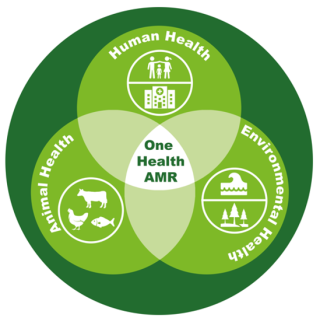Our hub is one of five new digital healthcare hubs aiming to drive the development of innovative digital technologies for healthcare, created with £16.5 million funding from EPSRC.
Who are we and our aims
Antimicrobials underpin modern medicine and play a vital role in treating infectious diseases and prevention. Antimicrobial resistance refers to when microorganisms (such as bacteria) change over time and no longer respond to medicines, making infections harder to treat. Due to antimicrobial resistance, microorganisms that once were treatable with front-line antimicrobials are becoming more difficult to treat, risking disease spread, prolonged severe illness and death. Antimicrobial resistance cuts across many sectors, as resistant pathogens can be transmitted between animals, humans and food, but this interconnectedness is poorly understood and data remains in silos.
This new Digital Health Hub for Antimicrobial Resistance, awarded £4 million from the Engineering and Physical Sciences Research Council (EPSRC), aims to increase knowledge and skills sharing among diverse groups, from researchers and healthcare workers to those working in animal health and environmental agencies, to policymakers, charities, industry and the public. It seeks to transform surveillance of and action against antimicrobial resistance by harnessing digital technologies that played such a key role during the pandemic.

A three-year hub programme will encompass a number of projects, for instance:
- the research foundations of a trusted-research environment for one-health antimicrobial surveillance data;
- a machine learning tool that can identify hospitalised patients who need a change in antibiotic therapy in real time;
- a dashboard for clinicians that can visualise data on resistant pathogens obtained from wastewater in Wales;
- developing nanodiamond sensors that can detect resistant pathogens at incredible sensitivity;
- a project exploring if online search data can predict antibiotic use.
The hub will also focus on upskilling and capacity building of large numbers of researchers, with a flexible funding programme aiming to encourage new collaborations. It will bring together researchers working across computer science, data visualisation, biomedical engineering, behavioural science, environmental science, clinical and public health research.
The need for our work
There is growing recognition of the importance of data science and digital health technologies in the fight against AMR, though the field remains in its infancy. Historically digital innovation uptake has been slower in health and public health than in other sectors (WHO’s first guidelines published in 2019). However, the pandemic has dramatically accelerated advances in digital health technologies, driven by unprecedented need. New tools and datasets have been widely adopted at scale, representing a major cultural shift.
Looking ahead, there is a huge opportunity to leverage these advances for AMR. The Pew Charitable Trusts are calling for better data capture of antibiotic use and AMR, and the need to adapt to changes in digital health. However, there remain many challenges: poor understanding of one-health needs; data linkage, data silos and gaps hinder surveillance; the lack of rapid tests and tools hinders decision-making and antimicrobial prescribing; and current rapid tests could provide more timely interventions, but often, lack of data capture increases risks of false positives/negatives and data loss. Broader challenges include: a lack of public awareness of AMR; digital interventions often do not prioritise user-led design and are not grounded in behaviour change; data privacy, security and ethical issues of bringing together large granular datasets; health inequalities and the digital divide; the disconnect between early stage research and AMR needs, and the little understanding of how digital technologies can be commercialised, regulated and integrated into health systems and patient pathways.
Our five key objectives
Given the above challenges, we aim to establish the Digital Health Hub for AMR to transform antimicrobial one-health surveillance and antimicrobial stewardship. Our hub vision will be achieved through five objectives:
1. Systems-level needs: To nurture a new culture of cross-sector engagement to accelerate the creation and adoption of digital health innovations for AMR One-Health surveillance and antimicrobial stewardship.
2. Skills and Capacity: To grow interdisciplinary skills, capacity, knowledge sharing and leadership needed to deliver a world-leading digital health strategy for combatting AMR.
3. Grand Challenges: To co-create digital health solutions for two AMR grand challenges: i) Digital one-health surveillance of antibiotic use and AMR, linking human, animal and environmental data ii) Digital antimicrobial stewardship via decision support algorithms, digital diagnostics, apps and sensors
4. Partnership Fund: To grow critical mass and a hub of innovation by seeding interdisciplinary partnerships and pilot studies between industry, academia, health and social care, animal health and environment partners.
5. Impact and Engagement: To maximise hub impact and EPSRC’s investment through our communications strategy, patient and public engagement across all WPs, biannual conferences and events.
 Close
Close




